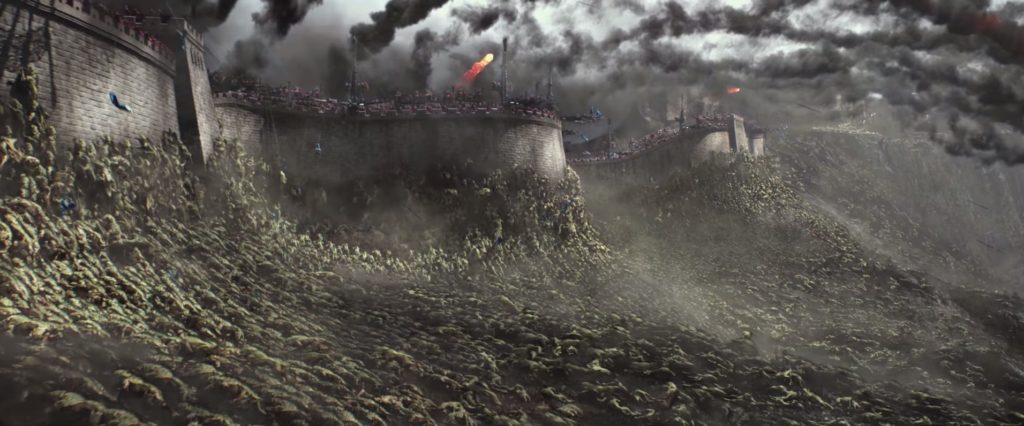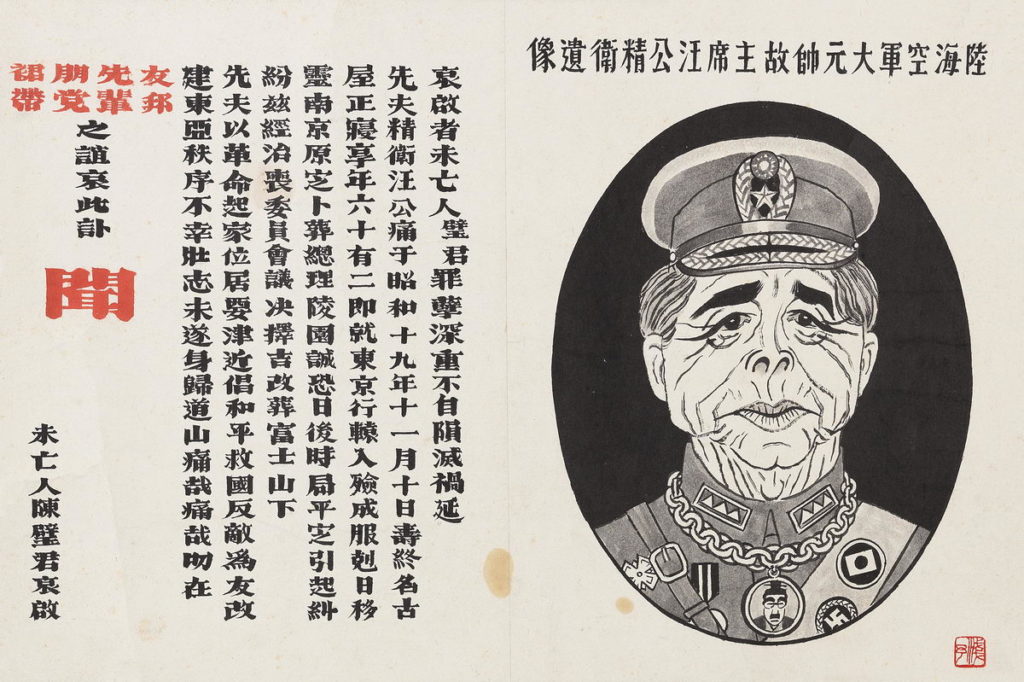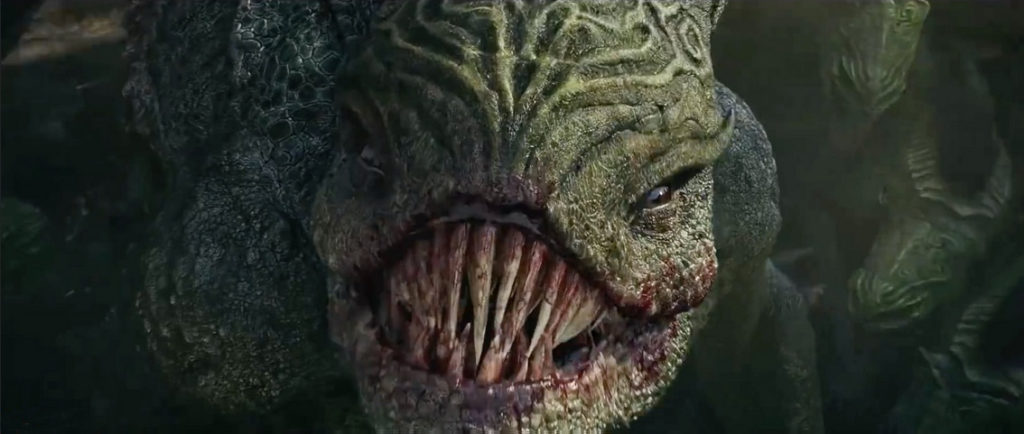The Japanese occupation of China, beginning with the annexation of Manchuria in 1932, and culminating in full-scale invasion via Shanghai in 1937, forms a key turning point in the history of modern China. If this seems like an odd (or inauspicious, or even politically incorrect) jumping off point for a review of Zhang Yimou’s latest film, Great Wall, bear with me for a moment.
As many scholars have argued, without Japanese occupation, the Chinese Communist Party is unlikely to have been able to defeat the Nationalists, whose failure (as so many textsbooks argue) to defend the Chinese heartlands turned countless young patriots against them. It is curious to note then, that so many prominent Nationalist politicians and military officials chose to collaborate with the Japanese invaders:
“Portrait of the Late Wang Jingwei” 汪精衛遺像 Ye Qianyu 葉淺予 (early 1940s)
While founding KMT member Wang Jingwei 汪精衛 (1883–1944, pictured above in a mock-memorial by Ye Qianyu) is of course the most obvious and well-known collaborator, there was also his right-hand man Zhou Fohai 周佛海 (1897–1948), his brother-in-law Chu Minyi 褚民誼 (1884–1946), and, in no particular order: Chen Gongbo 陳公博 (1892–1946), Jiang Kanghu 江亢虎 (1883–1954), Bao Wenyue 鮑文樾 (1892–1980), Ren Yuandao 任援道 (1890–1980), Xiao Shuxuan 蕭叔宣 (1894–1945), Yang Kuiyi 杨揆一 (1885–1946), Tang Erho 湯爾和 (1878–1940), Chen Zenmin 陳則民 (1881–1951), Zang Shiyi 臧式毅 (1884–1956), Li Shaogeng 李紹庚 (1896–?), Wang Zihui 王子惠 (1892–?), and Zhang Yanqing 張燕卿 (1898–1951).
Of these, Wang Jingwei and Jiang Kanghu were known anarchists (as young men at least), with Wang spending 1910-1911 in prison for an assassination attempt of Prince Chun 和碩醇親王, father of the Puyi, the last emperor of China. One theory, known as “saving the nation through twisted means” 曲线救国, holds that these collaborators were actually serving the Nationalists by directing the Japanese forces to target Communists. As Chiang Kai-shek himself is supposed to have once famously said, “The Japanese are a disease of the skin. The Communists are a disease of the heart” 日本的侵略是皮肤病,共产党才是心脏病.2
- Tried very hard not to make a 日本鬼子 comment here, but it does seem relevant to point out that in the PRC the Japanese, to this day, are referred to as ‘devils’ or ‘demons’ in casual conversation. [↩]
- This quote may very be apocryphal. The Chinese appears to be a back translation from English, which fits with the fact that the most convincing source appears to be a June 30, 1941, letter from Ernest Hemingway to Henry Morgenthau, United States Treasury Secretary. Hemingway had accompanied his then wife, the journalist Martha Gellhorn, on a trip to wartime capital of Chongqing in spring of that year, where they had both met Chiang Kai-shek. In the letter, however, he simply quotes a ‘KMT official,’ not the Generalissimo himself. See “In love and war: a Hong Kong honeymoon for Ernest Hemingway and Martha Gellhorn,” Post Magazine, February 13, 2016. [↩]


